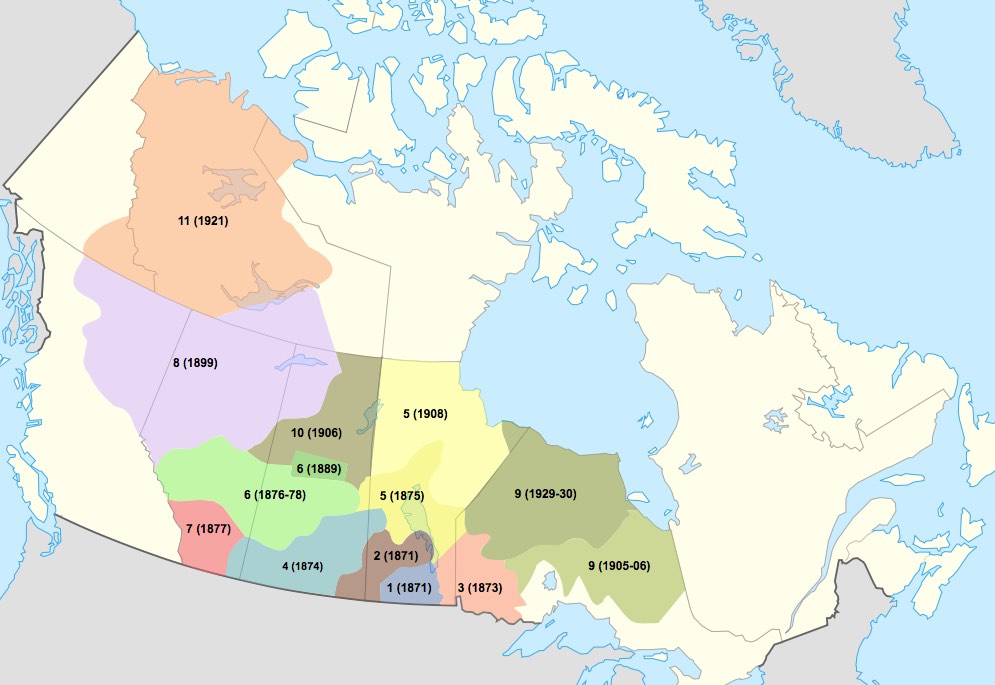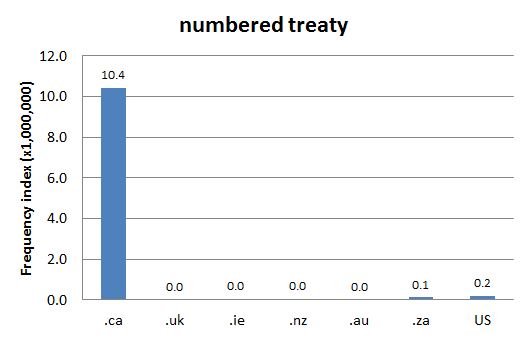DCHP-2
numbered treaty DCHP-2 (June 2016)
n. — First Nations
any of the 11 treaties signed between Canada and Aboriginal peoples between 1871 and 1929-30 (see Image 1).
Type: 4. Culturally Significant — This term is part of Canada's legal heritage. In the late 19th and early 20th centuries, agreements were signed between a representative of the monarch and the chiefs of several First Nations bands. Though the different treaties were signed at different times for land across a very large area, the general understanding was that the Aboriginal peoples would give up their land rights in exchange for reserve lands as well as other goods, such as cash, farming assistance, schools, hunting and fishing rights, infrastructure, and allowances for supplies (worded as blankets and equipment for hunting, fishing and farming). In Treaty Six, for land in Alberta and Saskatchewan, there was a clause for a "medicine chest" for the use of First Nations, which is a provision for medical care (see the first 1989 quotation). Disputes have arisen over which services should be provided and which should not, which then-National Chief Georges Erasmus summarized in 1989 (see the second quotation). Chart 1 shows that the term is almost exclusively used in Canada. See also the Canada in the Making reference, "Numbered Treaty Overview".
COD-2 lists the term but does not label it "Cdn".See also: treaty (meaning 1a) First Nation Aboriginal
- Note that the 1973 quotation does not include the term, yet gives early acknowledgement in the public domain (The Globe and Mail) as to Aborigional peoples' land rights.
References:
- COD-2
- Canada in the Making "Numbered Treaty Overview" Accessed 4 Jul. 2013
Images:

Image 1: Locations of the numbered treaties (Source: Wikimedia Commons. Map: Themightyquill)
Chart 1: Internet Domain Search, 16 Aug. 2012
